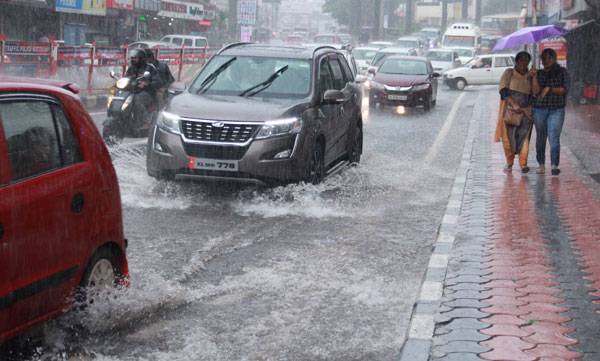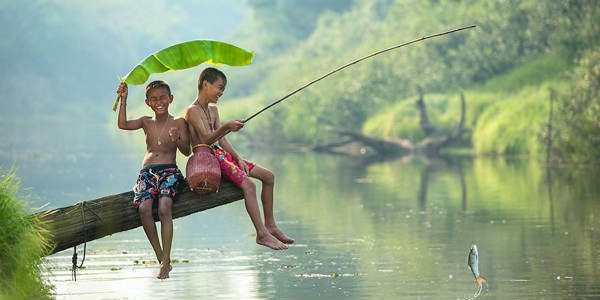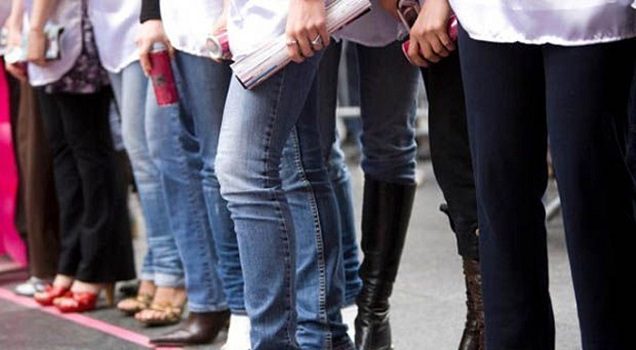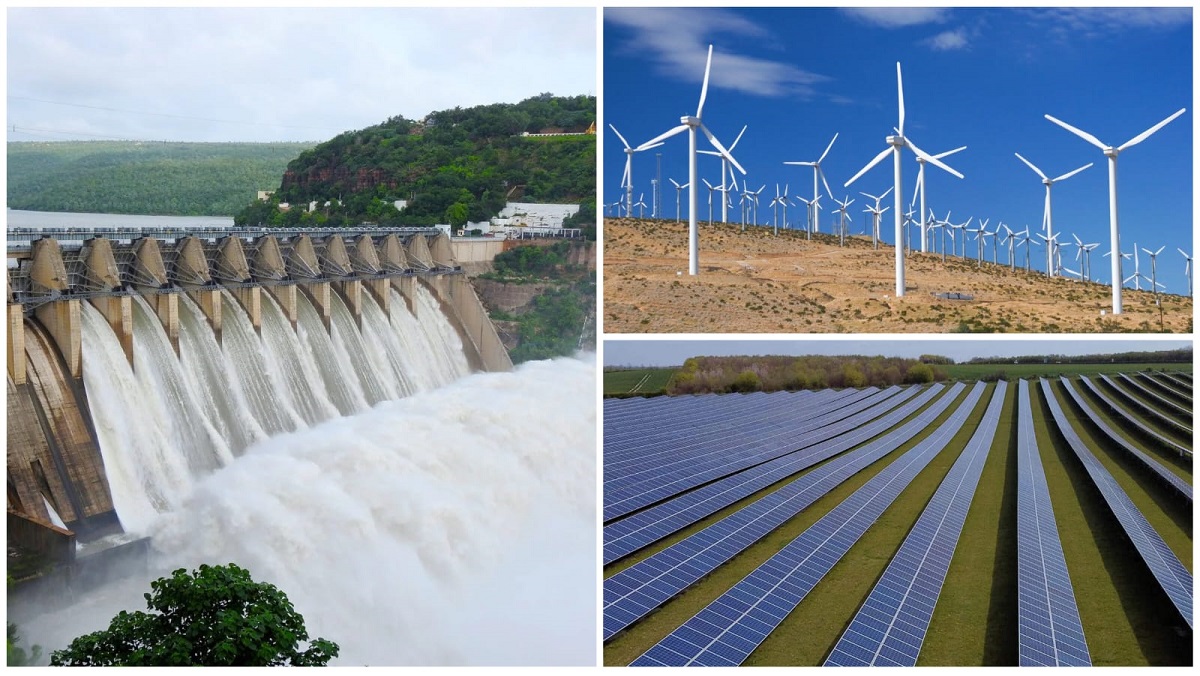What happened when fashionable footwear became common in Kerala?
Before the 90’s Keralites used to buy only water resistant rubber or plastic footwear. Fashionable footwear was rare.
I don’t know when footwear became so common in Kerala. Because if you google ‘Kerala 1970’ or ‘Kerala 1975’ you will see that there are very few images of people in footwear. But one thing is sure that before the 90’s Keralites used to buy only water resistant rubber or plastic footwear.
In Kerala rain is unpredictable and in the bygone days, people had to walk a lot. There was no way to protect the shoes from getting wet. So in earlier days, people used to buy, water-resistant, rubber or plastic chappals.
And there was no compulsion for children to wear shoes to school because rain is unpredictable in Kerala.
Water-resistant footwear replaced by fashionable footwear
When we went for the vacation during our childhood, to Kerala, we used to carry clothes that dry fast, and water-resistant footwear.
In the 1980’s, for instance, there were fewer private transports. People had to walk for 15-20 minutes, mostly on unpaved roads, to reach the bus stops. On rainy days there were potholes and puddles. That required durable footwear rather than fashionable footwear.

Since water resistance and design does not go together it was hard to find fashionable footwear in Kerala. If someone wore a fashionable shoe all eyes would be on those shoes.
From the 90’s there was an emerging fashion sense of footwear. Pointed and flat heals have become common. Sneakers and leather shoes are used as daily wears in the rain prone Kerala
Nowadays, everyone has a collection of shoes for various occasions. Yes, they own a pair of shoe for the rain too. But not the lacklustre plastic or rubber chappals of the yonder years. Now there are fashionable rainy shoes. And durability is not the issue. What is more important is the good looks.
Gods Own Country
The 90’s is an important time period because it was in 1989 that an ad company gave Kerala the title of ‘God’s own country’. The title changed the image of Kerala. And slowly Kerala became one of the sought after tourist destinations in the world. 1990 was also the beginning of globalisation and privatization.
A large number of Keralites started travelling aboard for work. People started getting exposed to other culture and there was more income. Also, a growing number of Indian and foreign tourists were visiting Kerala.
Keralites whether they were in Kerala or abroad, got exposed to other cultures. Cultural shock was reduced. The quality of life improved for Keralites. There were changes in the dressing also. Half sarees and sarees were replaced by salwar kameez. Rubber and water resistant plastic footwear were replaced by leather and designer footwear.
Own vehicles to travel with fashionable footwear
When you wear costly leather shoes, that can get spoiled in rain. Naturally, your concentration will be towards protecting the shoes from the rain. Most Keralites own vehicles like a car or a two-wheeler. Now there is no need to walk to the bus stands.
Front yards paved with tiles
And the front yards are decorated with paved tiles. So there are no more puddles in front of the house. You can walk on the tiled pavements which are attractive and prevent the shoes from getting soiled.

Waterproof Houses
The houses and public buildings are now built rainproof. Not a single drop of rainwater enters the houses. And the car parking is covered. you can get into the car without the shoes and clothes getting wet in the rain.
No space for rainwater to penetrate underground
The worrying factor is that when you cover the ground in front of your house with tiles, you are not allowing the rainwater to penetrated underground. When we use engineering and design to beautify the surrounding and protect ourselves from rain, do we play a role in the flood that hit Kerala?
Watching rain without getting wet
Before 1990’s people did not like to visit Kerala during the rainy season. Because the rain hampered the tour programme. But now people enjoy coming to Kerala because they can watch the rain, without getting wet, by sitting in the balcony or while travelling in an Airconditioned Car.
We think of rain as a spoiler when we visit Kerala to enjoy the lush green landscape. We forget that rain is responsible for the lush green landscape.
Building boundary walls, blocking rainwater
We build boundary walls around our property without leaving an outlet for the flood water to drain. In this way, we are preventing the rainwater from flowing and draining into the rivers.
Building houses inspired by the West
When we model our houses like those in Western countries, we must understand that those countries do not get rainfall like Kerala. When we build houses and public buildings, we must take into consideration the geography of the area.
What are the possible solutions?
Do not build houses on paddy fields
During this flood, many people were complaining, in television interviews, that the flood water cannot drain into the rivers or seas because their route is blocked by the manmade constructions. Some houses are built on the paddy fields, whereby the flood water cannot go underground in those places.
Do not block the route of the rainwater
There is a saying in Hindi “Paani apna rastha nahi bhoolta”. Which means water does not forget its route. If the water knows the way, the human being in the area also must be knowing the way the rainwater flows to drain in the river or sea.
Ensure that rainwater is able to penetrate underground
When we construct roads and houses, or hardscape the front and back yards, we must ensure that the rainwater is given its due space to seep underground or flow into the river.
Do not ignore rain and rainwater
We cannot live in Kerala by ignoring the rain. If there is too much rain then there is the flood. If there is a scarcity of rain then there is drought. A few months ago Kerala government was planning to produce artificial rain by cloud seeding because of the scarcity of water in some regions.
The manmade constructions are one of the many reasons for the flood. If we make some correction in the constructions of houses and public building, and it’s surroundings, we can prevent flood to some extent.

every little help
There is a saying in Malayalam, “Annaan kunjum thannaal aayathu.” which means “every little help”. The proverb comes from the story of the little squirrel that helped Lord Rama in building the bridge. Lord Rama blessed the squirrel by stroking on the back. Which caused three striped to form on the squirrel. And Lord Rama said that the service of the small one also matters in the completion of a big project.
I feel that our houses are the smallest block of development in Kerala. We must provide options in our homes for rainwater harvesting and also for the excess water to flow into the river. Our small action helps in increasing the water table levels in our area.
Blame game
In television interviews, you can see the flood victims blaming the government. We forget that we are also part of the Government. Some things we can also do. Instead of waiting for the Government to do something, we must take ownership of developing our village in an environment-friendly manner.
We are indebted to nature. In a State like Kerala, which is Nature’s bounty, you cannot ignore Nature and her fury and carry on development.
In this flood, the water was around 5 ft high. A bigger flood had happened in 1924. The flood which is known as the great flood of 99 Malayalam Era (ME) is said to have risen to 12 ft. The flood killed thousands and washed away a rail line. Even in that flood the reason for the flood was said to a manmade construction – the breaches in the Mulleperiyar dam.
Find a rain friendly fashion
Nowadays we wear leather chappals that get spoiled in rain. And jeans that take a long time to dry. We must find an alternative fashion which is rain friendly. The design of our homes and garments must be rain friendly. We must enjoy getting wet and dirty in the rain.

When in Kerala blend with rain
When you are in Kerala, instead of finding methods to protect yourself from rain, blend with nature. Give rain the utmost priority in all your activities.





59 comments